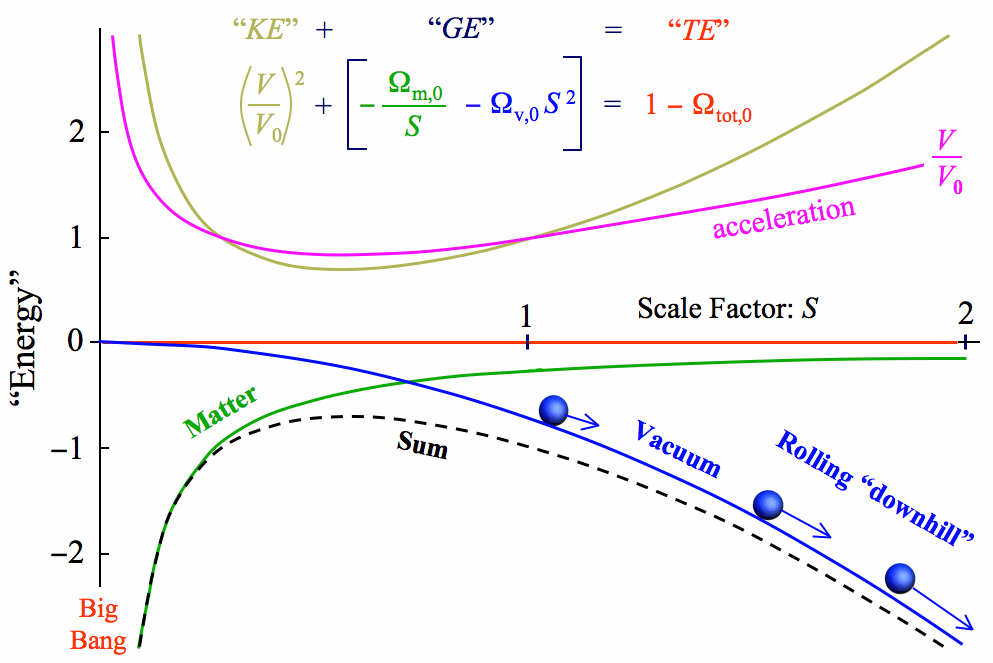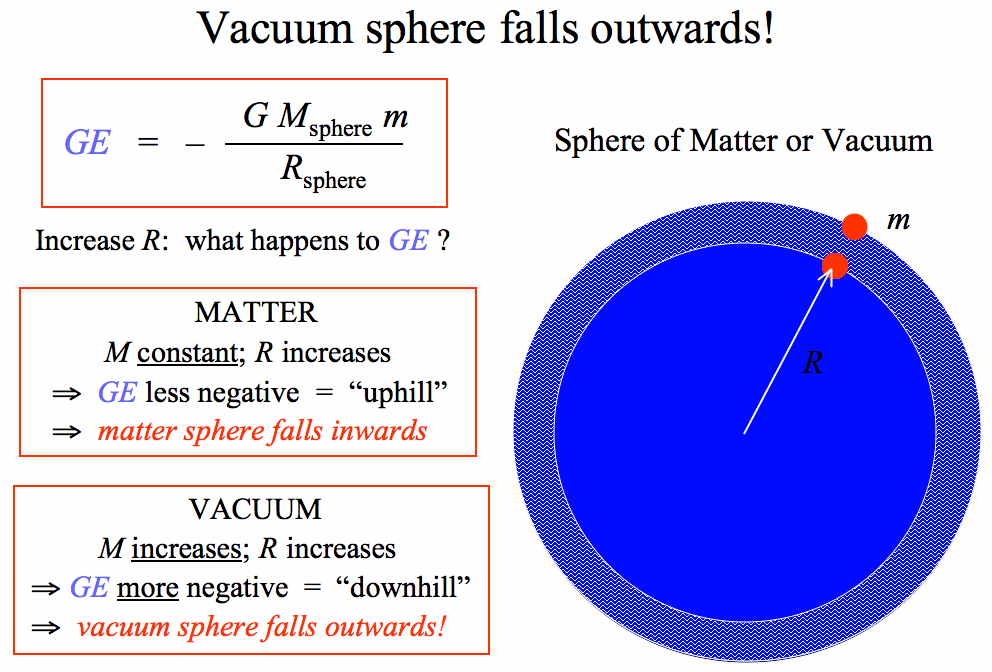
Energy curves for the matter and vacuum of the concordance model (i.e. ignoring radiation). One can understand the vacuum's tendency to accelerate as a ball rolling down the gravitational energy hill. When an object rolls down hill, it is moving to a place of more negative gravitational energy, the difference is "converted" to kinetic energy. The same happens for a Universe dominated by dark energy (vacuum): when it becomes larger it has lower gravitational energy. Hence "downhill" is "outwards" and the Universe "falls outwards" quite naturally.

The situation given above is shown slightly different way. Move a rock, and the sphere, outwards. For a matter sphere the mass is fixed but the radius increases, so the gravitational energy gets more positive -- this is "uphill". For a vacuum sphere, however, the mass itself increases, so the gravitational energy gets more negative -- this is "downhill". Vacuum spheres "fall outwards".
Figure: Whittle's (upcoming) undergraduate text.